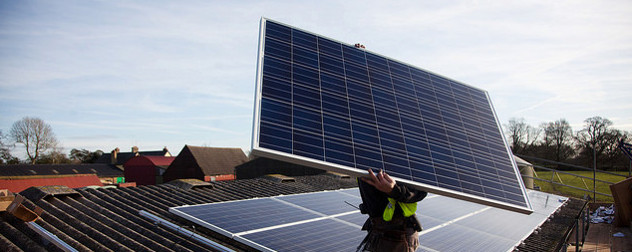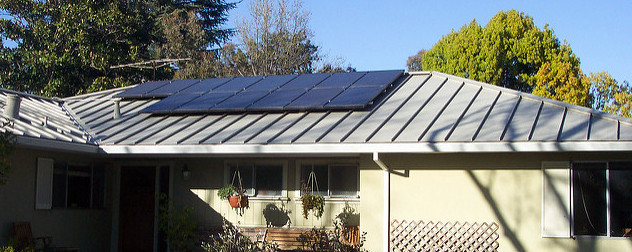As a Vermont vacation home owner, it hardly comes as a surprise to me – and it probably won’t come as one to you – that wind power has become a big issue in the state’s race for governor this year.
But it does come as something of a surprise that it is the Republican candidate, Phil Scott, who is taking a hard-line stance against corporate wind power development, while his Democratic opponent Sue Minter favors locating more wind farms in the Green Mountain state, a position also favored by outgoing Democratic incumbent Peter Shumlin.
And it is downright astonishing that this issue might actually tilt the race in Scott’s favor by allowing him to pick up a large slice of staunchly liberal voters in the state that sends Bernie Sanders to represent it in the U.S. Senate.
But political divides don’t always follow typical national patterns in Vermont. For one thing, both Republicans and Democrats tend to be more liberal – especially but not exclusively on social issues – than their party counterparts elsewhere, especially outside the Northeast. The state has only one bona fide urban center, the Burlington area, which is notably more prosperous than the rest of Vermont; nothing else is anything more than a small town. And there is an enormous gap between the genuine locals and the part-time residents like me, who often pay the bulk of a community’s taxes but who are ineligible either to vote or to participate in the annual town meetings in March.
So in the end, local politics often devolves into a debate over “What’s in it for me?” And to be fair, this particular trait is hardly peculiar to Vermont.
It has reached an extreme, however, in the town of Windham – just one county south of my place – where The New York Times reported this week that a Spanish energy developer has offered to make long-term cash payments to local residents if they approve a controversial ridgetop wind power development.
To opponents of the project, the offer sounds like blatant vote-buying. But to backers, it sounds like a form of private-sector tax relief. Local residents would be the ones who put up with the visual, auditory and other impacts of the wind farm (which, as in most such controversies, are grossly overstated, since there are already hundreds of such installations operating nationwide without causing major problems), but the lion’s share of any tax relief would go to the “flatlanders” like me, who pay the highest property taxes.
State officials have determined the offer is legal because it would be open to everyone in the affected community if the wind farm is approved, regardless of whether the individuals voted for or against the proposal.
As is frequently the case, you have to ignore some silliness in the Times story to get to the real news. Especially noteworthy is the story’s comparison of wind-turbine installations on ridgelines to mountaintop coal mining in the Appalachians. Such mining takes the top off a mountain and dumps it into nearby river valleys. In contrast, no mountain has ever been structurally harmed by putting a windmill on top of it. The whole point of putting the windmill there is to get it as high as possible, above the trees and other obstacles that reduce wind velocities and reliability at lower elevations.
Wind power’s Vermont critics say the state can do just as well environmentally and economically by relying on solar power for its renewable energy portfolio. This makes me wonder whether these people are confused about their state’s climate or geography. Their priorities might work in Florida or Arizona, but we are talking about Vermont – a place hardly known for reliable sunshine. In fact, the reason those mountains are so green is because the sun is just an occasional fringe benefit that enhances the scenery.
Vermont has extensively developed its solar capacity in the past decade or so, but that has been accomplished largely through favorable regulation that requires utilities to pay top dollar for any excess power that a property owner contributes back to the grid. Everyone who does not have a solar panel on their roof or in a nearby field ultimately foots the bill.
In the end, I don’t feel strongly about the particular wind development project in Windham or about wind development in my neighborhood, either. While I might prefer not to look at a windmill atop a nearby hill, I could live with it. More to the point, if the strange-bedfellows aspect of Vermont politics installs a Republican governor, who can at least serve as a check on the state Legislature’s worst anti-business and government-growing instincts, the outcome is about the best I can hope for as a flatlander who just visits occasionally to spend my time and money.














October 15, 2016 - 11:07 am
Mr. Elkin,
You appear to be addressing energy issues in Vermont in order to explain to your clients and wider community some of their more surprising political implications at the moment. As an industry professional, I agree that renewable energy politics and policy in Vermont have become complex and at times controversial – not surprising, given the fact that renewable energy now accounts for more jobs per capita in Vermont than in any other state, and that Vermont leads the US in renewable kWh produced per capita. Renewable energy matters on the landscape and in the economy, and is undergoing a significant transition that Vermonters asked for and vote for.
But I want to correct several statements you made, in view of the fact that you are a leader of a nationwide financial services firm and are liable to be taken seriously.
First, you refer to Vermont as “a place hardly known for reliable sunshine”. While this is true, it’s misleading. Vermont has fewer sunshine hours than many states, but you don’t need sunshine for solar panels to produce electricity economically, and for example Germany is farther north and cloudier than Vermont but is the scene of the most advanced solar economy in the world today.
Second, you state “Vermont has extensively developed its solar capacity in the past decade or so, but that has been accomplished largely through favorable regulation that requires utilities to pay top dollar for any excess power.” Yes, a strong incentive of 19 cents/kWh for net-metered solar was created in order to stimulate investment , but as of 1/1/2017 it is being significantly reduced, initial growth targets having been achieved.
Third, in referring to “any excess power that a property owner contributes back to the grid” you are presumably referring to net-metered solar arrays, but it’s important to note that a large majority of such arrays in Vermont, up to 500 kW in capacity, deliver all of their power – not excess power – into the grid, and are 3rd-party financed power plants with large consumers of electricity (e.g., towns, schools, hospitals) that usually do NOT own the property, and that are brought in as bill-credit “off-takers”.
Finally, and this is the greatest error I need to point out, you say “Everyone who does not have a solar panel on their roof or in a nearby field ultimately foots the bill.” This is a common misunderstanding and a popular accusation by the anti-renewables NIMBY crowd, but the facts don’t bear it out. Distributed generation such as Vermont’s net-metered solar has been shown in many studies to reduce capital investment requirements in transmission and distribution infrastructure, and also tends to hit maximum production on hot sunny summer days when demand is also peaking, and when Vermont utilities would otherwise have to be buying peaking power at very high spot market prices from the ISO New England grid.
Partly as a result of this last phenomenon, over the past ten years Vermont has moved from having the most expensive electricity in New England/New York, to having the second lowest electric rates, even with an all-Democratic legislature and governor, and with the closure of the Vermont Yankee nuclear plant.
The ongoing transition to a renewables-based energy infrastructure is not without controversy and the continual need for better policies, but it’s very important to avoid perpetuating assumptions that confuse the public and add pain to the transition.
Thanks for the opportunity to comment.
(Our firm has developed over 22 MW of distributed solar around Vermont to date, representing nearly $80 million in investment, with capital partners both in and outside Vermont, and with a large variety of public-sector, community, and private-sector net-metering credit off-takers.)
Ralph Meima
Director of Development, Green Lantern Group
Brattleboro, Vermont